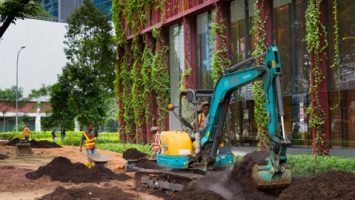
The combination of modern, smart architecture with urban agricultural principles has created the new field of “agritecture”. Henry Gordon-Smith, an urban agriculture consultant and creator of the Agritecture blog, says the trend reflects an appreciation of what farmers do, but also an acknowledgement that cities have a role to play in food production.
As Gordon-Smith says, “My generation, we’ve become very disconnected from nature, but we don’t necessarily want to go back to the rural environment. We like the city, we like the things that exist there. So what urban agriculture does is it bridges that.”
In recent years, cities across North America have been actively developing more green roofs, which essentially means the top of a house or building features vegetation planted over a waterproof barrier. Green roofs offer a city a number of advantages: they reduce run-off which can cause urban flooding and water contamination, purify the air by filtering out pollutants, and also help moderate the energy needed to maintain the temperature of a building throughout the year.
Several years ago, the City of Toronto mandated that all new buildings must include a green roof but did not require that these spaces provide a means to grow food. The Daniels Corporation, developers in the Greater Toronto Area, offer urban agriculture initiatives in several of their communities. A prime example is The Backyard Farm & Market at Erin Mills where land-in-transition is being used to grow organic food for a healthy community food hub.
A stunning example of agritecture was recently unveiled in Vietnam, by H&P Architects: The Terrace House. Combining the traditional terrace farming methods of Vietnam, with modern architecture, The Terrace House promotes the possibilities of urban farming by providing natural cross-ventilation and rainwater collection for irrigation.


